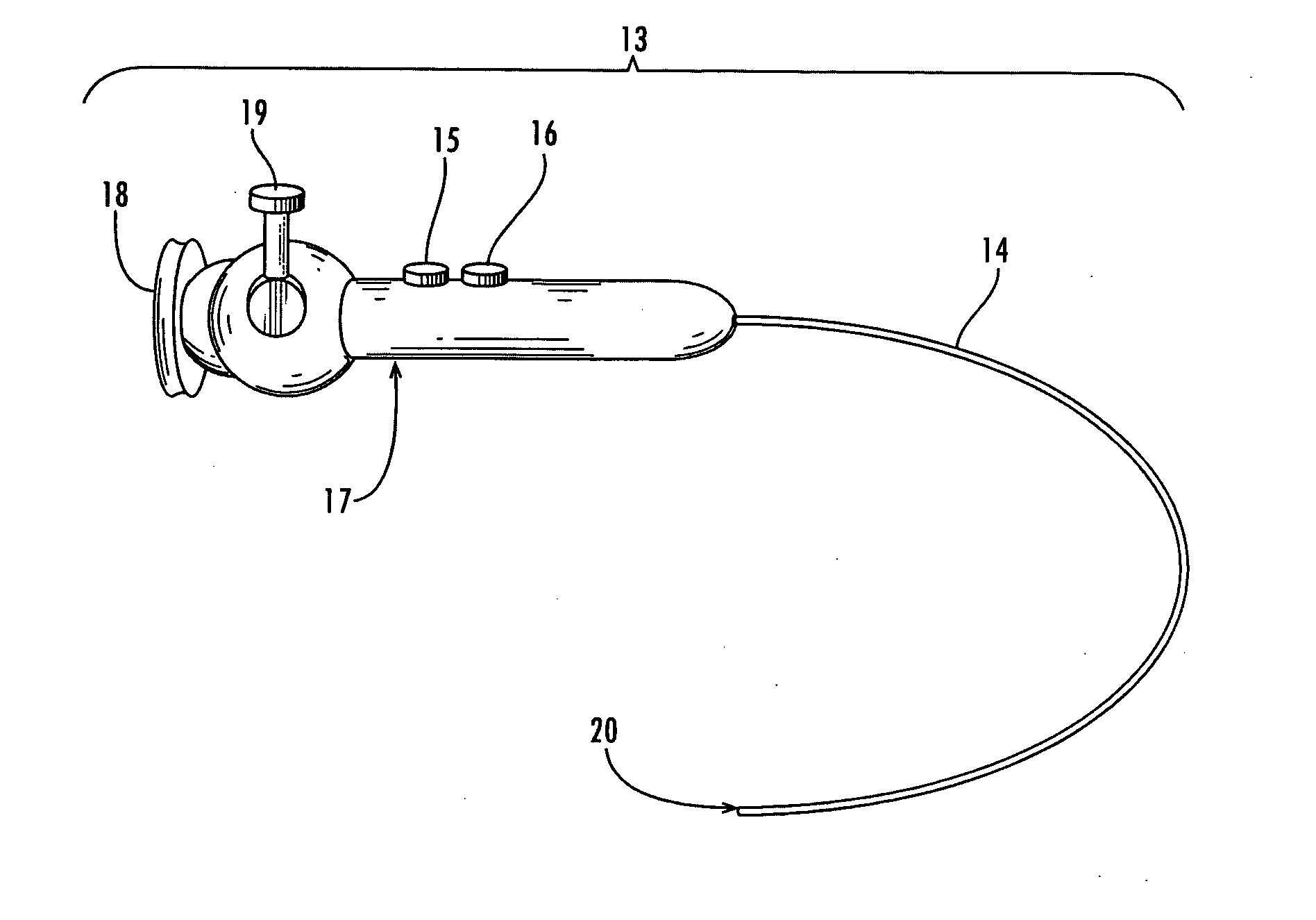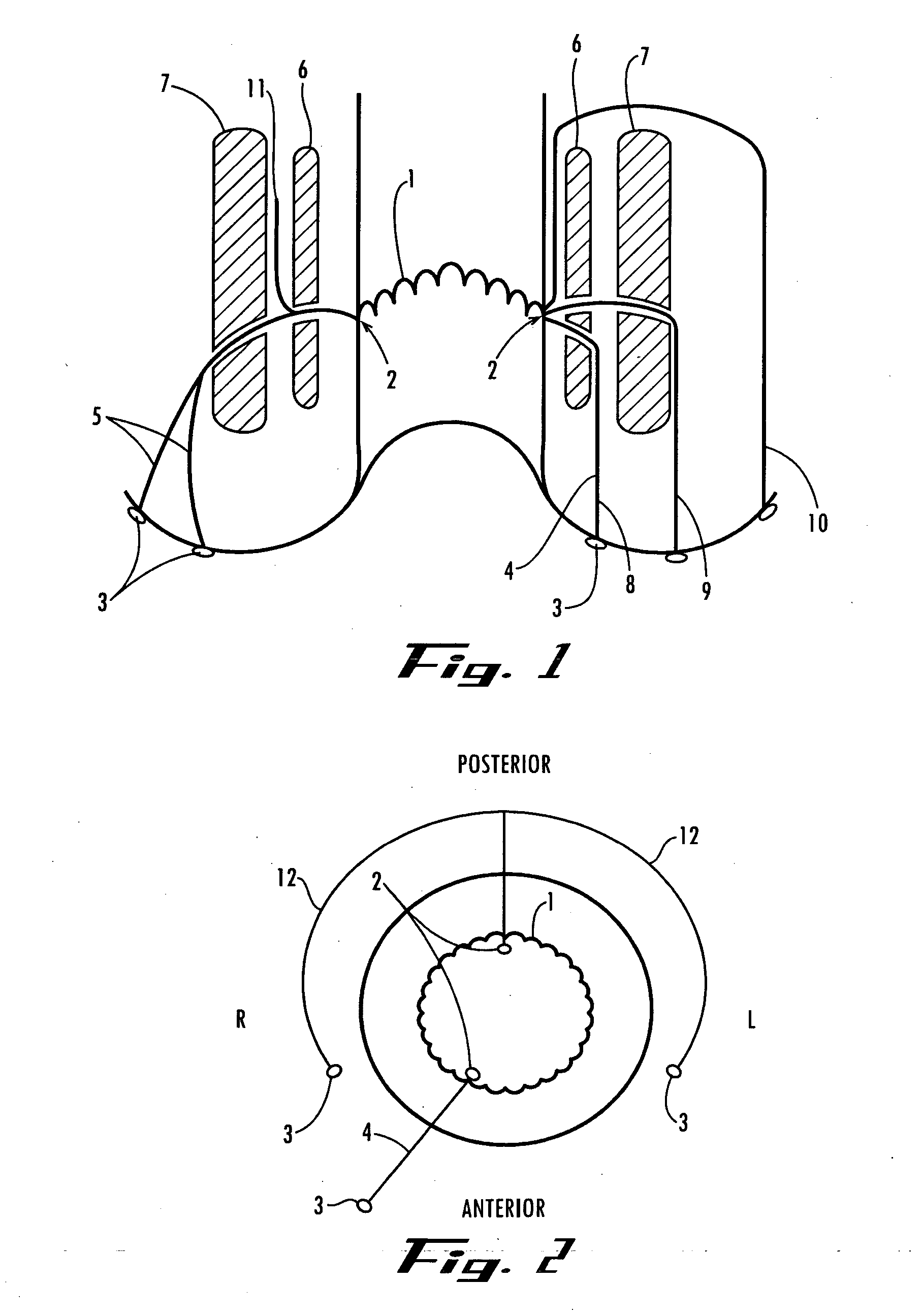Instrument and method for endoscopic visualization and treatment of anorectal fistula
an endoscopic and fistula technology, applied in the field of anorectal fistulae, can solve the problems of reducing affecting the treatment effect, and causing the formation of multiple complex fistulas, so as to reduce the likelihood of creating false passages, improve the treatment effect of anorectal fistula, and accurately identify the course of anorectal fistula
- Summary
- Abstract
- Description
- Claims
- Application Information
AI Technical Summary
Benefits of technology
Problems solved by technology
Method used
Image
Examples
Embodiment Construction
[0020] Referring in more detail to the drawings, the instrument 15, designated as the Fistuloscope, includes a fiber-optic endoscopic device, for the visualization of anorectal fistulae. The endoscope includes a head assembly 17, a probe or probe 14 and a tip 20. The probe is approximately 6-12 inches long, with a typical outside diameter of 0.5 to 3.0 mm and a tapered tip that may be used to perform the visualization and treatment of an anorectal fistula: The endoscope system includes in its probe 14 fiber-optic bundles for visualization and illumination, an irrigation port 15 and channel for ante-grade irrigation of fluid, and an instrument port 16 and channel for the passage of guide-wires, drains, instruments or solutions such as sealants or sclerosants. The head assembly 17 includes an optical viewing and lens system that may be attached to a video camera, a video monitor and a video recorder for ease of viewing at the distal end or tip of the instrument. The head assembly also...
PUM
 Login to View More
Login to View More Abstract
Description
Claims
Application Information
 Login to View More
Login to View More - R&D
- Intellectual Property
- Life Sciences
- Materials
- Tech Scout
- Unparalleled Data Quality
- Higher Quality Content
- 60% Fewer Hallucinations
Browse by: Latest US Patents, China's latest patents, Technical Efficacy Thesaurus, Application Domain, Technology Topic, Popular Technical Reports.
© 2025 PatSnap. All rights reserved.Legal|Privacy policy|Modern Slavery Act Transparency Statement|Sitemap|About US| Contact US: help@patsnap.com



